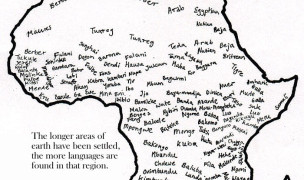 10 Terms
10 TermsHome > Terms > English, UK (UE) > Region coding
Region coding
Region Coding has received attention because of the ease with which it can be decoded and the fact that a coder of this type is used in Intel's Digital Video Interactive system (DVI), the only commercially available system designed expressly for low-cost, low-bandwidth multimedia video. Its operation is relatively simple. The basic design is due to Kunt. Envision a decoder that can reproduce certain image primitives well. A typical set might consist of rectangular areas of constant color, smooth shaded patches and some textures. The image is analysed into regions that can be expressed in terms of these primitives. The analysis is usually performed using a tree-structured decomposition where each part of the image is successively divided into smaller regions until a patch that meets either the bandwidth constraints or the quality desired can be fitted. Only the tree description and the parameters for each leaf need then be transmitted. Since the decoder is optimised for the reconstruction of these primitives, it is relatively simple to build. To account for image data that does not encode easily using the available primitives, actual image data can also be encoded and transmitted, but this is not as efficient as fitting a patch. This coder can also be combined with prediction (as it is in DVI), and the predicted difference image can then be region coded. A key element in the encoding operation is a region growing step where adjacent image patches that are distinct leaves of the tree are combined into a single patch. This approach has been considered highly asymmetric in that significantly more processing is required for encoding/analysis than for decoding. It is harder to grow a tree than to climb one. While hardware implementations of the hybrid DCT coder have been built for extremely low bandwidth teleconferencing and for hdtv, there is no hardware for a region coder. However, such an assessment is deceptive since much of the processing used in dvi compression is in the motion predictor, a function common to both methods. In fact, all compression schemes are asymmetric, the difference is a matter of degree rather than one of essentials.
- Part of Speech: noun
- Synonym(s):
- Blossary:
- Industry/Domain: Entertainment
- Category: Video
- Company: Tektronix
- Product:
- Acronym-Abbreviation:
Other Languages:
Member comments
Terms in the News
Featured Terms
Lamborghini Urus
Unveiled at the 2012 Beijing Auto Show, Urus is Lamborghini's first utility vehicle since the LM002 which was built in limited numbers between ...
Contributor
Featured blossaries
Marouane937
0
Terms
58
Blossaries
3
Followers
9 Most Expensive Streets In The World
 9 Terms
9 Terms
Browers Terms By Category
- Railroad(457)
- Train parts(12)
- Trains(2)
Railways(471) Terms
- Festivals(20)
- Religious holidays(17)
- National holidays(9)
- Observances(6)
- Unofficial holidays(6)
- International holidays(5)
Holiday(68) Terms
- Characters(952)
- Fighting games(83)
- Shmups(77)
- General gaming(72)
- MMO(70)
- Rhythm games(62)
Video games(1405) Terms
- Home theatre system(386)
- Television(289)
- Amplifier(190)
- Digital camera(164)
- Digital photo frame(27)
- Radio(7)
Consumer electronics(1079) Terms
- General art history(577)
- Visual arts(575)
- Renaissance(22)



